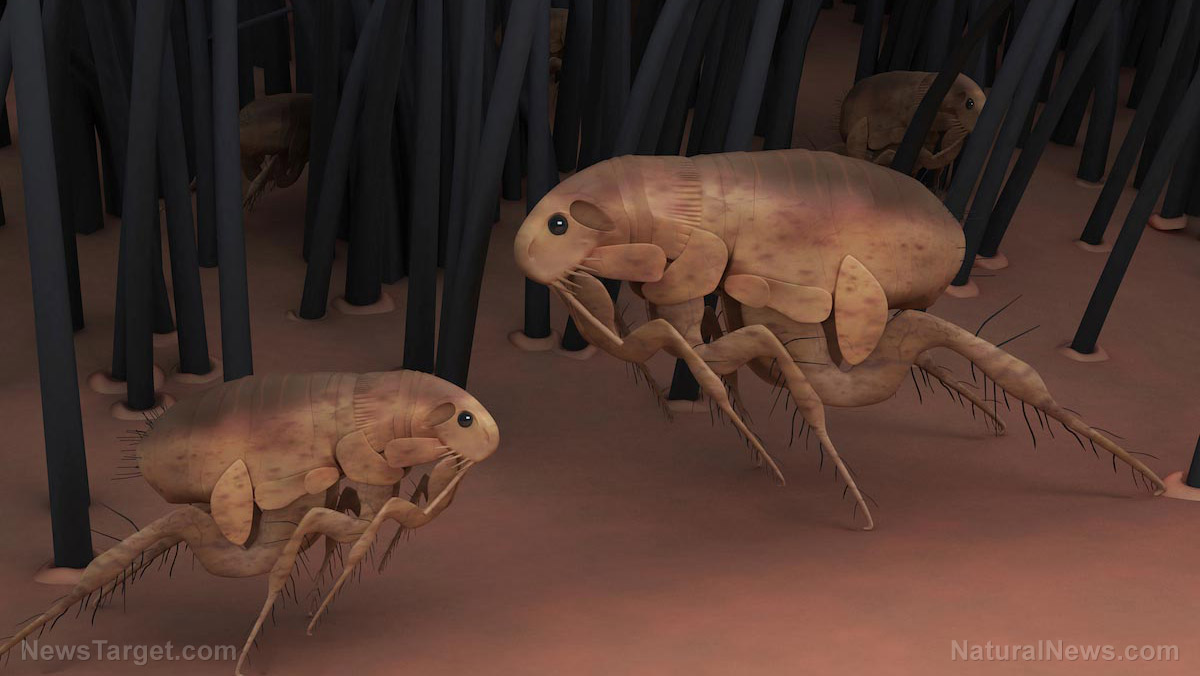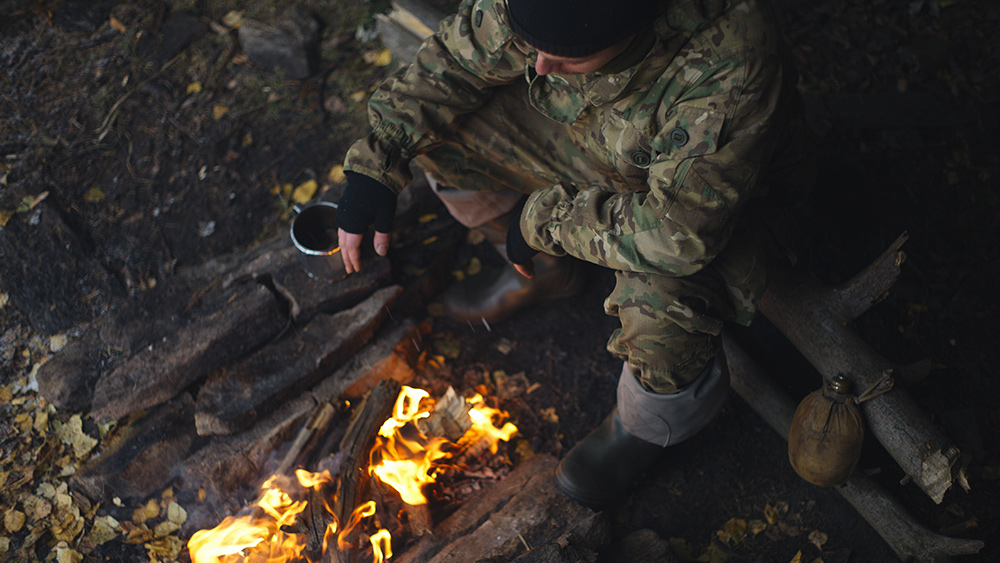Fleas are extremely tiny, bloodsucking parasites that are an absolute nightmare to deal with once they have
infested your home. They don't have wings but they have flat bodies and strong legs, which allow them to jump long distances.
Fleas also have armored bodies that make them almost impossible to crush – allowing them to thrive undetected on your carpet or rugs.
People can pick up fleas in the same way as cats or dogs – outside of your house. Even if you don't have pets, fleas can also infest and feed on mice, rats and other pests, and these critters could carry those pesky blood-suckers into your house.
To
prevent a flea infestation, here is a guide on how to build a
cheap, easy-to-make flea trap that can effectively remove fleas from your house. (Related:
Prepper projects: Make a DIY mosquito trap to protect your family from bites. )
Water and dish soap flea trap
Materials:
- Containers that are shallow, with a wide surface and low sides
- Liquid dish soap
- Water
- Tea light candles or battery-operated LED candles or desk lamps
- Dish towels
Directions:
Step 1.
Pour water into a shallow dish.
Ideal containers include cookie sheets, rubber lids or any other containers that won't act as a barrier for jumping fleas.
Step 2.
Add liquid dish soap – at least two tablespoons.
Swish the water around to distribute the soap. Fleas do not weigh enough to break through water's surface tension and drown. Adding liquid dish soap reduces the surface tension, which helps trap the fleas and causes them to sink and drown.
Step 3.
Add your flea attractant (e.g, source of light and heat).
Fleas are
attracted to light. The movement in front of light sources helps fleas determine where to jump to find their "meal" or a potential host to feed on. When adult fleas come to investigate the light, they will hop right into the shallow bowl or pan to get closer to the light and drown.
You can use any of the following as your flea attractant:
- Votive candle, tea light candle or a battery-operated LED tea light
- Desk lamp
- Yellow or green light bulb
Option 1. Put a votive candle (small, short candle) in the middle of your water and soap mixture. Tea light candles or battery-operated LED ones both work effectively. Feel free to try what you want.
Votives are often sold independently while tea lights come in self-contained cups. Since they both have the same diameter, you can easily use the same candle container or cup. Because tea lights are smaller, their burn time is usually less than four hours. A votive candle is taller – at least one inch high – and will burn longer.
Remember to exercise great care and proper safety measures when burning candles no matter how small they are. Place your traps a safe distance away from walls, drapery and other flammable objects or materials.
Option 2. If you choose to use a desk lamp, try to use a small, directional one. Set the flea trap near an electric outlet and lean the lamp over your shallow bowl. Make sure the lamp is sturdy and not at risk of being knocked over into the trap.
Incandescent light is warmer than other bulbs and appears slightly yellowish, which makes it a great for attracting fleas. Incandescent bulbs are also cheaper but have a short lifespan of around 600 to 1,200 hours.
Fluorescent lamps, on the other hand, are more energy-efficient and have a longer lifespan. But light from a typical fluorescent bulb is cooler and less yellow – making it more similar to natural daylight. You could make it more attractive to fleas by changing the bulb into a green or yellow one since fluorescent bulbs are commercially available in a wide range of colors.
Step 4.
Place your flea trap where the fleas are most active.
Areas where you're likely to find the highest concentration of fleas are near spots where your dogs or cats spend the most time. Lay a towel on the floor to catch spills and lay the trap on top of it.
You may have to set more than one trap depending on the extent of the infestation in your house. Common places to find fleas include rooms with carpets and rugs; furniture and pillows; windows and doors; pet bedding and pet bowls.
If you plan to leave multiple traps in different rooms, make sure these traps are adequately shielded from running children and pets.
Step 4.
Leave the traps overnight.
Fleas become active a couple of hours before sunset and stay active all night. Once you lay the traps, leave them undisturbed for the rest of the night.
Step 5 (Optional).
You can add indoor plants as another attractant.
Place indoor plants close to your flea traps, such as pet-friendly succulents and others that need minimal care.
Besides light, heat (warmth) and movement, fleas are also attracted to carbon dioxide (CO2) that their "hosts" exhale when breathing.
Fleas may not have the best eyesight but they have an excellent sense of smell that can detect even trace amounts of carbon dioxide in the air from any potential hosts that are breathing close by.
Step 6.
Check the traps for dead fleas each morning; empty out the traps and refill.
If you caught any fleas the previous night, dump the soapy water, rinse the dish and refill your trap with fresh water and more liquid dish soap. Lay the traps out again for the next night – and every night thereafter until you stop catching.
Regularly check your dogs and cats for fleas and protect them accordingly.
Visit
Preparedness.news for more stories like this.
Watch the following video to learn
How to make a flea trap that actually attracts fleas.
This video is from the
Daily Videos channel on Brighteon.com.
More related stories:
With malaria cases on the rise, here are some NATURAL ways to prevent mosquito bites.
How to make a DIY non-toxic mosquito repellants with essential oils.
How to make cheap, but very effective, DIY mosquito traps.
Sources include:
TheBugSquad.com
Angi.com
EcoGuardPestManagement.com
Brighteon.com
 Parler
Parler Gab
Gab










